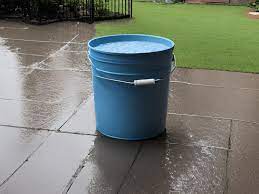
Breaking News
 $11 Trillion Quietly Moved - Americans Will Freeze & Obey When Market Collapse Hits : Chase Hughes
$11 Trillion Quietly Moved - Americans Will Freeze & Obey When Market Collapse Hits : Chase Hughes
 Econ 101 - 2026 Early Economic Forecast
Econ 101 - 2026 Early Economic Forecast
 Buy'r breaks the Blackrock monopoly- How the corporate club controls America
Buy'r breaks the Blackrock monopoly- How the corporate club controls America
 An AI Expert Warning: 6 People Are (Quietly) Deciding Humanity's Future! We Must Act Now!
An AI Expert Warning: 6 People Are (Quietly) Deciding Humanity's Future! We Must Act Now!
Top Tech News
 Build a Greenhouse HEATER that Lasts 10-15 DAYS!
Build a Greenhouse HEATER that Lasts 10-15 DAYS!
 Look at the genius idea he came up with using this tank that nobody wanted
Look at the genius idea he came up with using this tank that nobody wanted
 Latest Comet 3I Atlas Anomolies Like the Impossible 600,000 Mile Long Sunward Tail
Latest Comet 3I Atlas Anomolies Like the Impossible 600,000 Mile Long Sunward Tail
 Tesla Just Opened Its Biggest Supercharger Station Ever--And It's Powered By Solar And Batteries
Tesla Just Opened Its Biggest Supercharger Station Ever--And It's Powered By Solar And Batteries
 Your body already knows how to regrow limbs. We just haven't figured out how to turn it on yet.
Your body already knows how to regrow limbs. We just haven't figured out how to turn it on yet.
 We've wiretapped the gut-brain hotline to decode signals driving disease
We've wiretapped the gut-brain hotline to decode signals driving disease
 3D-printable concrete alternative hardens in three days, not four weeks
3D-printable concrete alternative hardens in three days, not four weeks
 Could satellite-beaming planes and airships make SpaceX's Starlink obsolete?
Could satellite-beaming planes and airships make SpaceX's Starlink obsolete?
Harvesting Rainwater in Urban and Suburban Areas

Back in the 2010's, I lived in a single-family home in a suburb of Orange County, California. We were solidly in a drought that had been plaguing the West for several years. While I had no danger of completely running out of water, there was definitely a financial incentive to conserve. By collecting the runoff from my daily shower and filling my toilet tank with it, my flushes didn't use fresh potable water. While this a good use of gray water, we also need alternative methods to collect water if city water supplies are disrupted. In a long-term emergency, you'll want to stretch your existing water storage as long as possible, so having ways like this to supplement is smart.
In This Post
What's your goal?
With most urban and suburban dwellings hooked up to a water system and sewer, the urban or suburban resident is in a good non-disaster water situation. Even so, many people seek to capture rainwater because we hate to see waste and not just food waste. Your goal might be simple, such as collecting and directing gutter downspout discharge into a garden, or a survival-related project of keeping a couple of barrels full of water, "just in case." Your goal and your circumstances determine your set-up.

 First totally synthetic human brain model has been realized
First totally synthetic human brain model has been realized Mach-23 potato gun to shoot satellites into space
Mach-23 potato gun to shoot satellites into space

